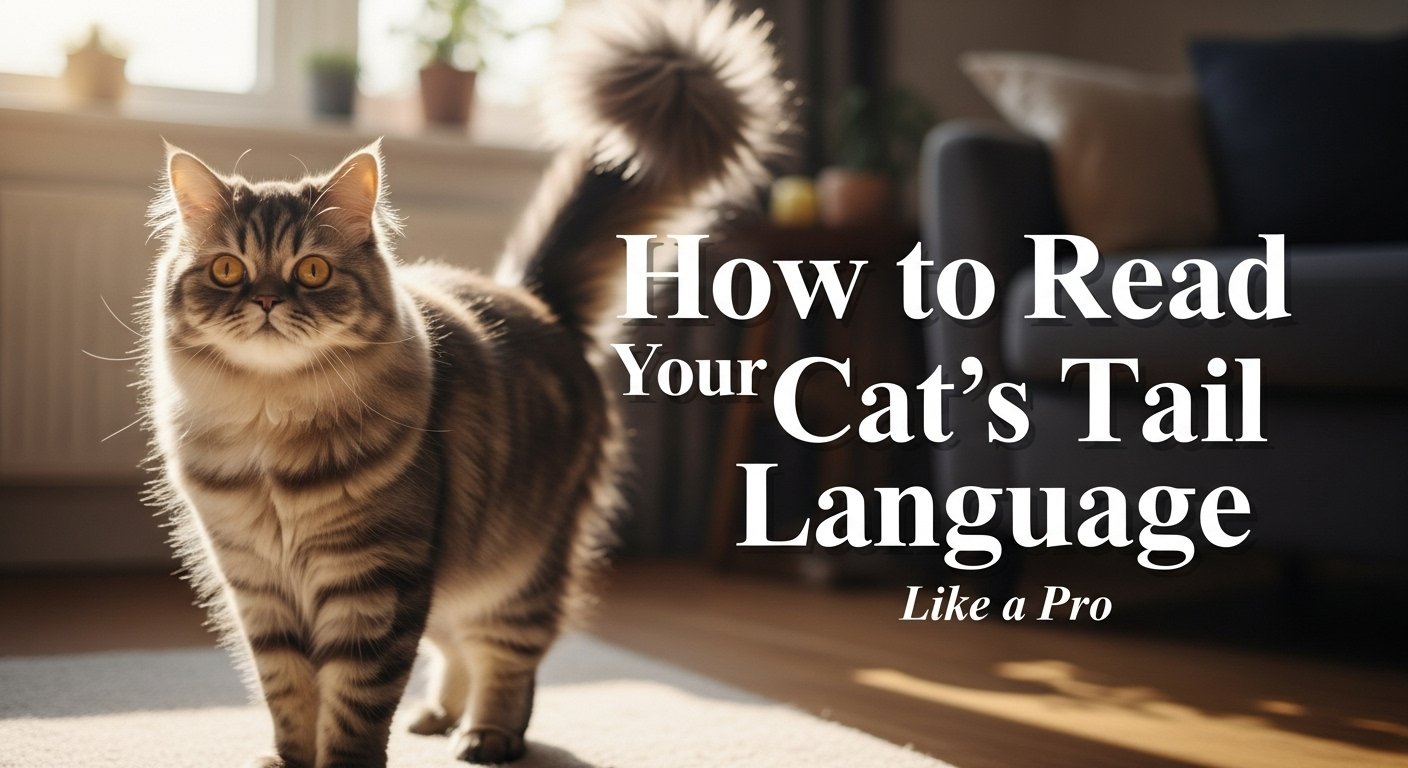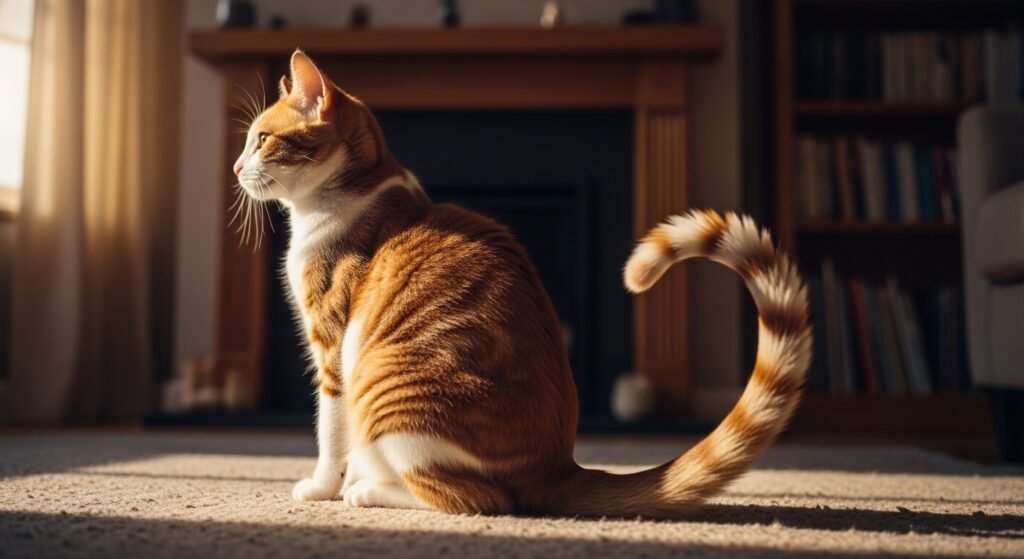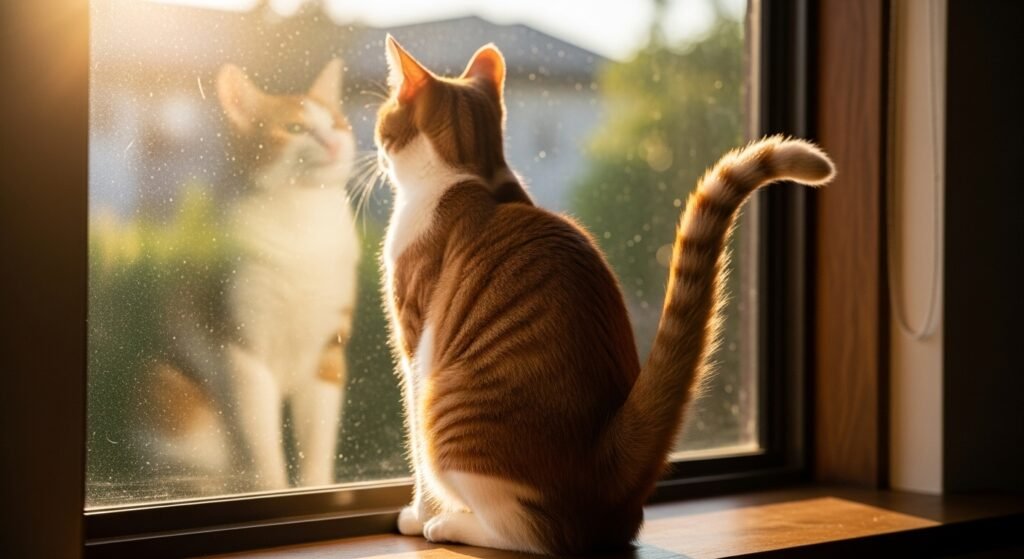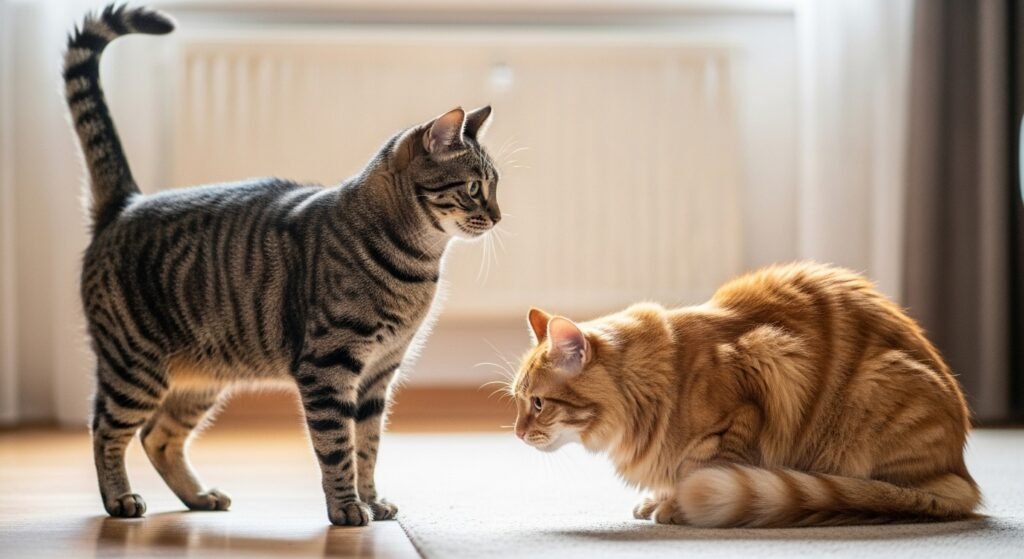
How to Read Your Cat’s Tail Language Like a Pro
Cats are known for being mysterious creatures, but if you pay close attention, they’re constantly “talking” to you especially with their tails.
From a joyful upright flick to a tense swish, your cat’s tail is like a mood barometer, revealing exactly how they’re feeling in the moment.
In this guide, you’ll learn how to decode your cat’s tail positions and movements so you can better understand and bond with your feline friend.
Why the Tail Is So Important in Cat Communication
A cat’s tail isn’t just for balance it’s a vital communication tool. Cats use their tails to:
- Express emotions (happiness, fear, anger, curiosity)
- Signal intentions to other cats or humans
- Maintain balance and coordination during movement
Fun Fact: The average cat tail has 18–23 vertebrae and dozens of muscles, allowing for incredibly precise movements.
Tail Positions & What They Mean
- Upright Tail Friendly & Confident
If your cat approaches you with their tail held high, it’s a sign of confidence and affection. They’re happy to see you and may be ready for interaction.
- Often paired with upright ears and a relaxed face
- Common in cats greeting their owners after an absence
- Question Mark Curve Playful Mood
A tail shaped like a curved question mark usually means your cat is feeling frisky and playful.
- They may invite a game or playful chase
- A great time to bring out the feather wand.

- Tail Wrapped Around You (Affectionate Gesture)
When a cat wraps its tail around your leg or arm, it’s their way of saying:
“You’re part of my family.”
This is similar to a human hug an intimate sign of trust and affection.
- Tail Straight Down (Focused or Hunting Mode)
A low, straight tail can mean your cat is stalking prey (even if it’s just a toy).
- In friendly cats, it may also indicate a neutral mood
- If paired with tense posture, it may be a warning sign
- Puffed-Up Tail (Fear or Aggression)
A tail that suddenly fluffs up is a classic sign of fear, surprise, or aggression.
- Often paired with arched back and sideways stance
- It’s a defense mechanism to appear larger to threats

- Tail Flicking or Lashing (Irritation or Agitation)
Fast, sharp tail flicks usually mean:
“I’m annoyed back off.”
- Common in overstimulated cats during petting
- Ignoring this sign can lead to swats or bites
- Tail Tucked Between Legs (Fear or Submission)
A tucked tail is a universal sign of fear, anxiety, or submission.
- May occur during vet visits or when meeting a dominant animal
- Speak softly and give them space
- Slow Tail Sway (Curiosity or Focused Interest)
If your cat’s tail is swaying gently while they’re watching something, they’re interested and focused but not aggressive.
- Often seen when watching birds or toys
- Can shift into pouncing behavior quickly

Combining Tail Language with Other Signals
To truly understand your cat’s mood, read their tail in combination with:
- Ears: Forward = alert, flat = fearful or angry
- Eyes: Dilated pupils = excitement, fear, or low light, slow blink = trust
- Body posture: Relaxed = calm , tense = stressed or ready to pounce.
For example:
- Upright tail + slow blink: Your cat is affectionate and relaxed
- Low, flicking tail + flattened ears: Your cat is irritated and wants space
Common Misinterpretations
- Mistaking Slow Tail Sway for Aggression This can actually be curiosity.
- Ignoring Agitation Flicks – Overstimulation can lead to bites.
- Assuming Upright Tail Is Always Good If bristled, its fear or defensiveness.
Why Learning Tail Language Matters
Understanding your cat’s tail signals can:
- Strengthen your bond
- Reduce misunderstandings
- Prevent bites or scratches
- Improve overall cat care
Cats are often misunderstood as aloof, but they’re constantly communicating it’s up to us to learn their language.
Recommended for Observing Cat Behavior
- Smarty Kat Feather Wand Toy – For playtime during “question-mark tail” moods
- Cat it Vesper Play Center – Encourages positive tail-up exploration
- Pet Fusion Cat Scratcher Lounge – Keeps cats engaged and relaxed



